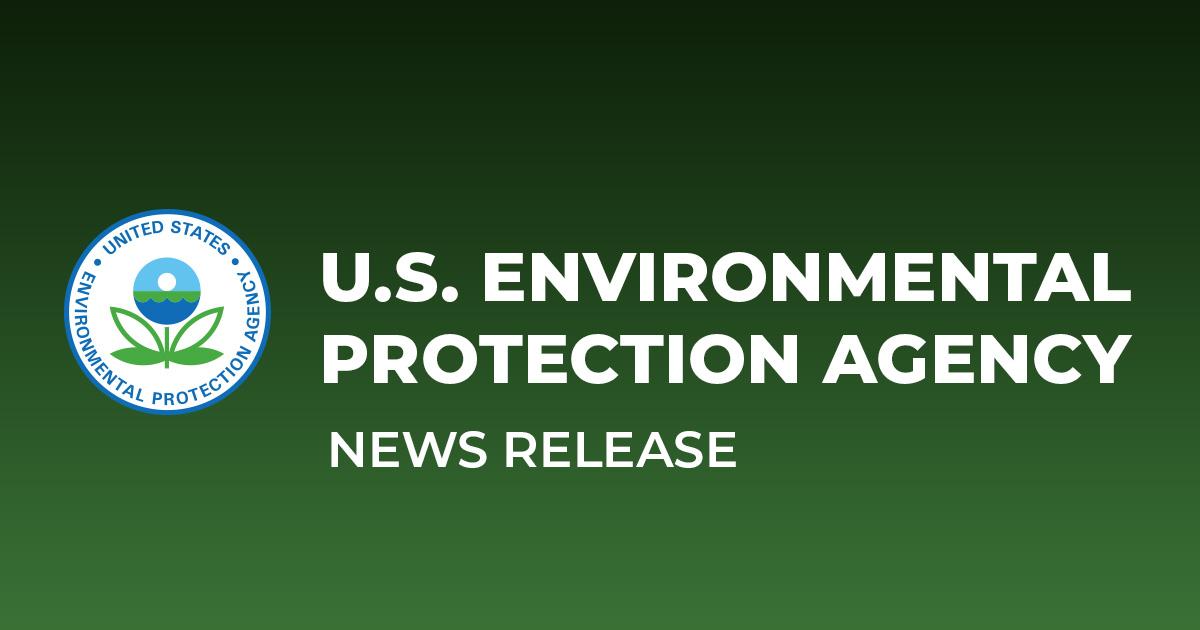
U.S. EPA Proposes Updates to Air Emissions Reporting Requirements
July 25, 2023

Contact Information
WASHINGTON – Today, the U.S. Environmental Protection Agency (EPA) announced proposed updates to the Agency’s Air Emissions Reporting Requirements rule, including proposing to require reporting of hazardous air pollutants, or “air toxics.” Air toxics are known or suspected to cause cancer and other serious health effects. The proposed updates would ensure that EPA has readily available data to identify places where people are exposed to harmful air pollution and to develop solutions, aligning with the Biden-Harris Administration’s commitment to advancing environmental justice.
The proposal would revise the Air Emissions Reporting Requirements rule, which currently requires states to report emissions of common air pollutants, such as particulate matter, along with pollutants that contribute to their formation, such as ozone-forming volatile organic compounds (VOCs). While most states voluntarily report some air toxics emissions data to EPA now, that reporting is not consistent nationwide.
“Data and science are the very foundation of the work we do every day at EPA to protect public health and the environment,” said EPA Administrator Michael S. Regan. “When we have the most recent, most accurate data on air toxics and other emissions, we can improve our identification of areas where people may be at risk from pollution, develop solutions and help ensure everyone has clean air to breathe.”
The data EPA receives under the rule forms the basis for the National Emissions Inventory. EPA uses information in the inventory as it develops and reviews regulations, conducts air quality modeling, and conducts risk assessments to understand how air pollution may affect the health of communities across the country, including those that are marginalized and overburdened by pollution. Other federal agencies, along with state, local, and tribal air agencies also use the data and information the inventory provides.
In addition to ensuring EPA has the data critical to identifying places where people are exposed to harmful air pollution, the proposal also would provide data that communities can use to understand the significant sources of air pollution that may be affecting them – including data on highly toxic chemicals that can cause cancer and other serious health problems. Collecting air toxics data will advance President Biden’s Cancer Moonshot, which includes a goal of preventing cancers by reducing environmental exposures to cancer-causing pollution.
The proposed rule would require nearly 130,000 facilities to report air toxics emissions directly to EPA. It would also give states the option to collect the air toxics data from industry and report it to EPA, provided the Agency approves their program. In addition, the proposal includes provisions to limit burden on small businesses, such as allowing certain small businesses to report total emissions of each air toxic instead of providing more detailed information.
EPA’s proposal also would improve other emissions data in other areas, by:
- Requiring certain facilities located in Tribal nations to report emissions if Tribes do not report them.
- Increasing reporting of common pollutants known as “criteria pollutants” by using the same emissions thresholds every year.
- Adding to the information that EPA and other federal and state agencies have available to understand the impacts of prescribed fires.
EPA will hold several informational webinars to provide background on the proposed rule and provide an opportunity for attendees to ask questions. The Agency will take written comment on the proposal for 70 days after it is published in the Federal Register. The Agency also will hold a virtual public hearing 21 days after the proposal is published in the Federal Register.
To read the proposal or to sign up to attend a webinar, visit the website for the proposed rule.
SDGs, Targets, and Indicators
1. Which SDGs are addressed or connected to the issues highlighted in the article?
- SDG 3: Good Health and Well-being
- SDG 11: Sustainable Cities and Communities
- SDG 13: Climate Action
- SDG 16: Peace, Justice, and Strong Institutions
The article discusses the proposed updates to the U.S. Environmental Protection Agency’s (EPA) Air Emissions Reporting Requirements rule, which aims to improve air quality and protect public health. This aligns with SDG 3, which focuses on ensuring healthy lives and promoting well-being for all at all ages. The article also mentions the goal of advancing environmental justice, which is connected to SDG 11, as it emphasizes the importance of sustainable cities and communities. Additionally, addressing air pollution contributes to SDG 13, which aims to take urgent action to combat climate change and its impacts. Lastly, the article mentions the use of data in developing regulations and conducting risk assessments, which relates to SDG 16’s goal of promoting peaceful and inclusive societies for sustainable development.
2. What specific targets under those SDGs can be identified based on the article’s content?
- SDG 3.9: By 2030, substantially reduce the number of deaths and illnesses from hazardous chemicals and air, water, and soil pollution and contamination.
- SDG 11.6: By 2030, reduce the adverse per capita environmental impact of cities, including by paying special attention to air quality and municipal and other waste management.
- SDG 13.2: Integrate climate change measures into national policies, strategies, and planning.
- SDG 16.7: Ensure responsive, inclusive, participatory, and representative decision-making at all levels.
The proposed updates to the Air Emissions Reporting Requirements rule aim to reduce air pollution and its adverse health impacts, which aligns with SDG 3.9. By requiring reporting of hazardous air pollutants, the EPA seeks to address the adverse per capita environmental impact of cities, specifically focusing on air quality, which relates to SDG 11.6. Integrating air toxics data into national policies and planning helps fulfill SDG 13.2’s target of incorporating climate change measures. Lastly, by collecting data and involving various stakeholders in decision-making processes, the EPA promotes SDG 16.7’s objective of ensuring inclusive and participatory decision-making.
3. Are there any indicators mentioned or implied in the article that can be used to measure progress towards the identified targets?
- Reporting of hazardous air pollutants
- Consistent nationwide reporting of air toxics emissions data
- Data on highly toxic chemicals that can cause cancer and other serious health problems
- Number of facilities reporting air toxics emissions directly to EPA
- Improvement in emissions data related to Tribal nations
- Increase in reporting of common pollutants known as “criteria pollutants”
- Availability of information on the impacts of prescribed fires
The article mentions several indicators that can be used to measure progress towards the identified targets. These indicators include the reporting of hazardous air pollutants, consistent nationwide reporting of air toxics emissions data, and the availability of data on highly toxic chemicals. The number of facilities reporting air toxics emissions directly to the EPA can also serve as an indicator. Additionally, improvements in emissions data related to Tribal nations, increased reporting of common pollutants, and the availability of information on the impacts of prescribed fires can be used to measure progress.
4. Table: SDGs, Targets, and Indicators
| SDGs | Targets | Indicators |
|---|---|---|
| SDG 3: Good Health and Well-being | 3.9: By 2030, substantially reduce the number of deaths and illnesses from hazardous chemicals and air, water, and soil pollution and contamination. | – Reporting of hazardous air pollutants – Data on highly toxic chemicals that can cause cancer and other serious health problems |
| SDG 11: Sustainable Cities and Communities | 11.6: By 2030, reduce the adverse per capita environmental impact of cities, including by paying special attention to air quality and municipal and other waste management. | – Consistent nationwide reporting of air toxics emissions data – Increase in reporting of common pollutants known as “criteria pollutants” |
| SDG 13: Climate Action | 13.2: Integrate climate change measures into national policies, strategies, and planning. | – Reporting of hazardous air pollutants – Availability of information on the impacts of prescribed fires |
| SDG 16: Peace, Justice, and Strong Institutions | 16.7: Ensure responsive, inclusive, participatory, and representative decision-making at all levels. | – Number of facilities reporting air toxics emissions directly to EPA – Improvement in emissions data related to Tribal nations |
Behold! This splendid article springs forth from the wellspring of knowledge, shaped by a wondrous proprietary AI technology that delved into a vast ocean of data, illuminating the path towards the Sustainable Development Goals. Remember that all rights are reserved by SDG Investors LLC, empowering us to champion progress together.
Source: epa.gov

Join us, as fellow seekers of change, on a transformative journey at https://sdgtalks.ai/welcome, where you can become a member and actively contribute to shaping a brighter future.






